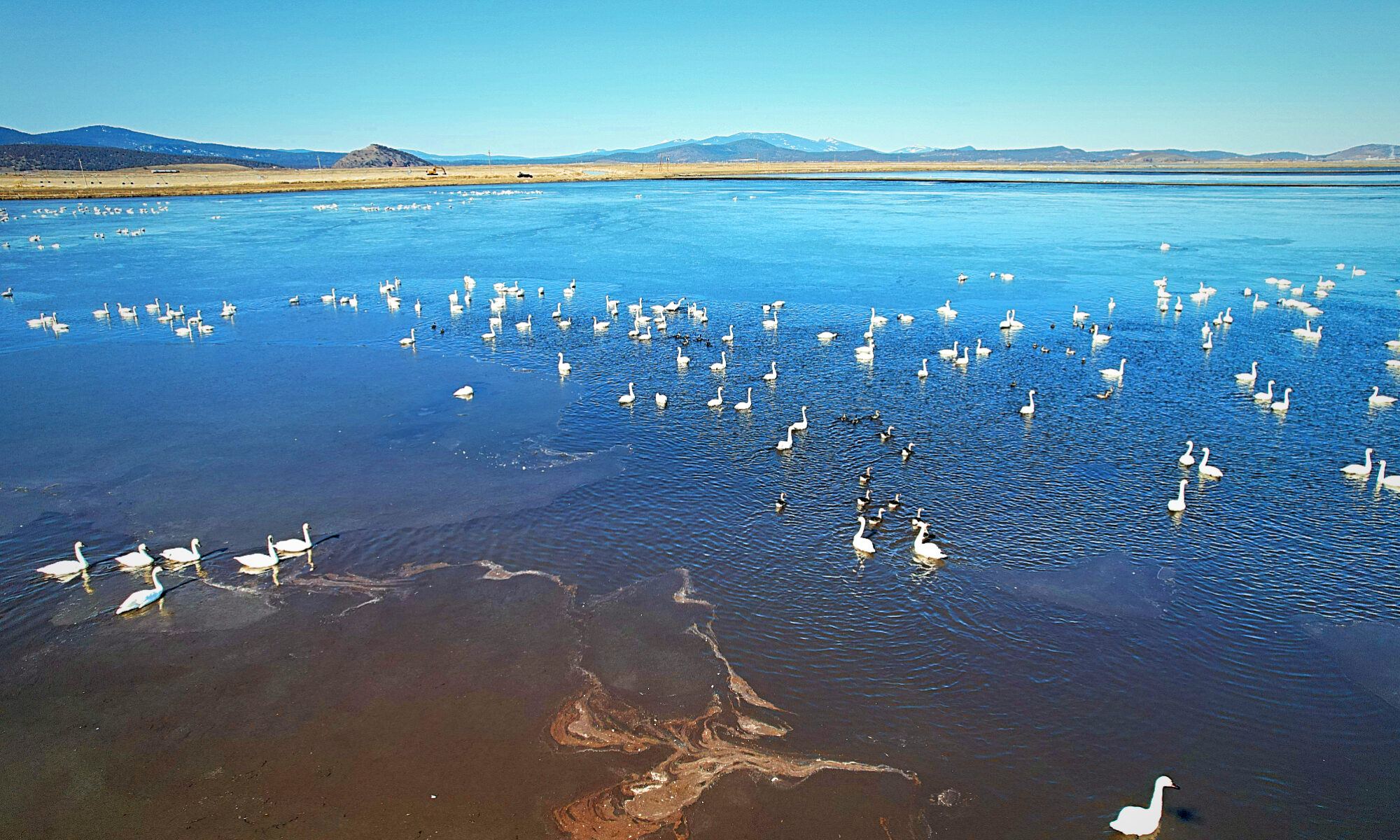Klamath Drainage District’s PR Committee created the following for a flier for the Winter Wings Festival and for anyone interested in visiting KDD Lands to enjoy the Klamath Basin wildlife that call our lands home. To pick up one of our fliers, visit our business offices at 4240 Highway 39, Klamath Falls, OR 97603, or download and print a PDF version available at the bottom of this page.
Wildlife in Klamath Drainage District

Klamath Drainage District is located in the historic footprint of Lower Klamath Lake, roughly 14 miles south of Klamath Falls, Oregon.
KDD provides water and drainage for approximately 27,000 acres of farmland
and wildlife refuge areas north of the California-Oregon state line. It is bordered by the Klamath Hills to the east and Highway 97 to the west.
The district was created on March 6th, 1915 as part of the Bureau of Reclamation’s Klamath Project to manage and maintain the farmland created when Lower Klamath Lake was drained.
What is different about KDD?
Klamath Drainage District is unique in the Klamath Basin because of its rich peat soils and natural hydrology.
Before being cut off by the construction of the railroad, Lower Klamath Lake would fill with high winter water levels in the Klamath River, creating a vast sea of tules and wetlands.
Landowners mimic this natural flow of water by flooding their fields in the Fall and Winter. This saturates the former lakebed soil to cut down on summer irrigation needs, while also providing valuable habitat to the many creatures that call the district home.
Wildlife in the Klamath Drainage District
The landowners in the Klamath Drainage District are proud of their farms and the role their farms play in providing food and habitat to the area’s many wildlife species.
Every spring, tens of thousands of migratory birds stop in the district’s flooded fields and the neighboring Lower Klamath National Wildlife Refuge to rest and refuel on their long journey north, just as every Fall they stop in those fields to feast on grains left after harvest on their way south.
The canals, ditches, and drains provide a home for muskrats, frogs, Western Pond turtles, and even the occasional otter as they deliver water to farm in the district.
The abundance of prey attracts and feeds one of the largest populations of bald eagles in the continental US, as well as other raptors and coyotes.
KDD works to reduce its impact on natural resources.
Klamath Drainage District continues to invest in infrastructure to make the district more efficient.
As a result of these investments, KDD returns or reuses more than 75% of the water that is used in the district. This helps reduce pressure on Klamath Basin water sources and supports the environment and the rest of the Klamath Project.
In the early summer months this lessens demands for water from Upper Klamath Lake during a critical time for C’waam and Koptu spawning. This can also augment flows in the Klamath River or be provided to the Lower Klamath Wildlife Refuge.


Klamath Drainage District
PO Box 1090
Klamath Falls, OR 97601
Phone: (541) 884-1739
Email: kdd280@yahoo.com
Website: www.klamathdrainagedistrict.org

DOWNLOAD A PDF VERSION OF THIS FLIER




